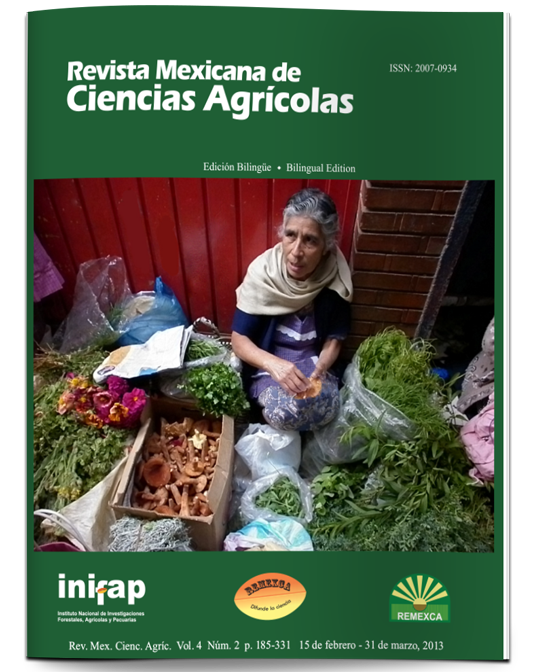Insecticidal effect of plant extracts on Culex tarsalis (Diptera: Culicidae) in laboratory
DOI:
https://doi.org/10.29312/remexca.v4i2.1237Keywords:
guanabana, neem, papaya, methanolAbstract
Mosquitoes are worldwide pests, due to diseases transmitted to humans from mammals or birds that migrate from one place to another. Plant extracts promise to be an alternative because it does not cause side effects to the environment and humans. Therefore the objective of this study was, to determine the insecticidal effect of plant extracts on Culex tarsalis larvae in the laboratory. The work was developed in the laboratory of the University (UAAAN), where plant extracts (methanolic and hexanic) and the bioassays were performed. The concentrations tested were: 400, 500, 600, 700, 800, 900 and 1000 ppm and mortality were recorded at 24, 48 and 72 h after the application of treatments. The results were analyzed in the PC-Probit for LC50. Seed extracts (Annona muricata, Carica papaya and Azadirachta indica) showed the best results by killing over 80% of the population after 24 h with 1000 ppm. Plant extracts of Annona muricata, Carica papaya and Azadirachta indica showed to be a good alternative for the control of Cx. tarsalis.
Downloads
Downloads
Published
How to Cite
Issue
Section
License
The authors who publish in Revista Mexicana de Ciencias Agrícolas accept the following conditions:
In accordance with copyright laws, Revista Mexicana de Ciencias Agrícolas recognizes and respects the authors’ moral right and ownership of property rights which will be transferred to the journal for dissemination in open access. Invariably, all the authors have to sign a letter of transfer of property rights and of originality of the article to Instituto Nacional de Investigaciones Forestales, Agrícolas y Pecuarias (INIFAP) [National Institute of Forestry, Agricultural and Livestock Research]. The author(s) must pay a fee for the reception of articles before proceeding to editorial review.
All the texts published by Revista Mexicana de Ciencias Agrícolas —with no exception— are distributed under a Creative Commons License Attribution-NonCommercial 4.0 International (CC BY-NC 4.0), which allows third parties to use the publication as long as the work’s authorship and its first publication in this journal are mentioned.
The author(s) can enter into independent and additional contractual agreements for the nonexclusive distribution of the version of the article published in Revista Mexicana de Ciencias Agrícolas (for example include it into an institutional repository or publish it in a book) as long as it is clearly and explicitly indicated that the work was published for the first time in Revista Mexicana de Ciencias Agrícolas.
For all the above, the authors shall send the Letter-transfer of Property Rights for the first publication duly filled in and signed by the author(s). This form must be sent as a PDF file to: revista_atm@yahoo.com.mx; cienciasagricola@inifap.gob.mx; remexca2017@gmail.
This work is licensed under a Creative Commons Attribution-Noncommercial 4.0 International license.



